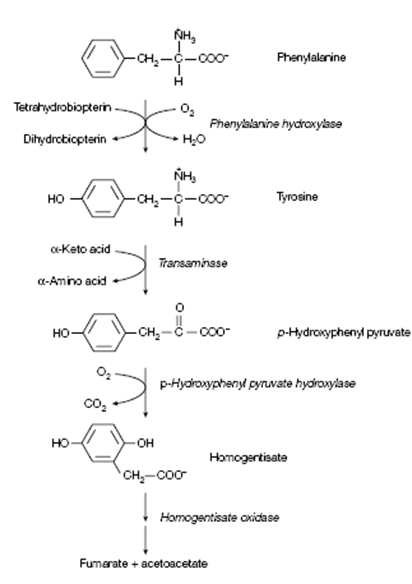Metabolism of phenylalanine:
The metabolism of phenylalanine will now be considered in some detail, as two inborn errors of metabolism are known which affect this pathway. The Phenylalanine is 1st hydroxylated through phenylalanine hydroxylase to form another aromatic amino acid tyrosine. The coenzyme for this reaction is the reductant tetrahydrobiopterin that is oxidized to dihydrobiopterin. The Phenylalanine hydroxylase is classified as a monooxygenase as one of the atoms of O2 appears in the product and the other is in H2O. The tyrosine is then transaminated to p- hydroxyphenylpyruvate that is in turn transformed into homogentisate through p- hydroxyphenylpyruvate hydroxylase. This hydroxylase is an instance of a dioxygenase, as together atoms of O2 become incorporated into the product. The homogentisate is then cleaved through homogentisate oxidase, other dioxygenase, before fumarate and acetoacetate are produced in a last reaction. The fumarate can feed into the citric acid cycle whereas acetoacetate can be used to form ketone bodies. Therefore phenylalanine and tyro- sine are each both ketogenic and glucogenic.

Figure: The metabolism of phenylalanine